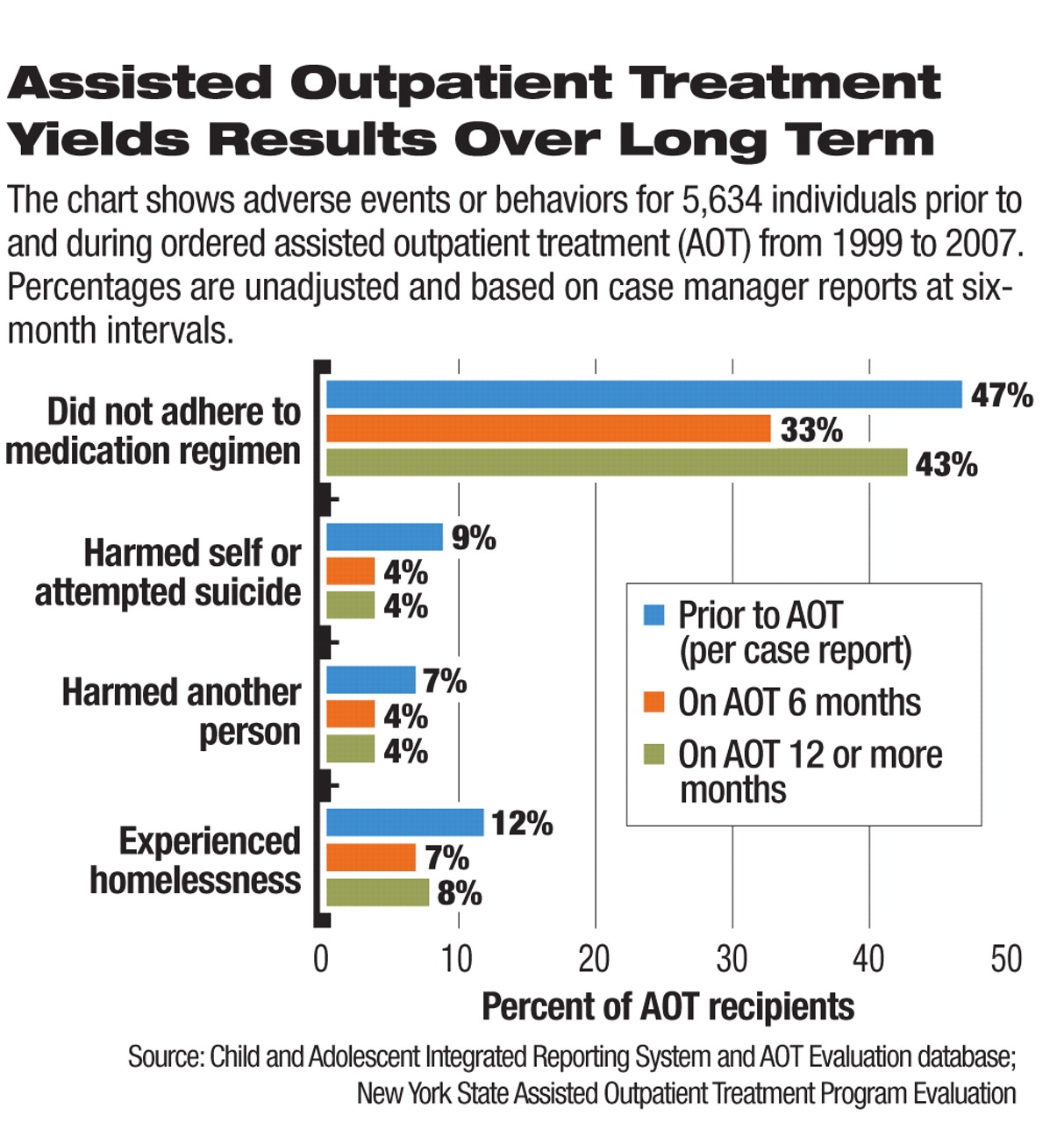A court-ordered treatment option that has been opposed by some mental health advocates as dangerous for both patients and clinicians in fact provides effective assistance to people with serious mental illness, researchers have concluded.
Their conclusions were based on a study of the effects of New York's 1999 Kendra's Law, which allows court-ordered assisted outpatient treatment (AOT) for people with severe mental illness who have been repeatedly arrested. Recipients generally were found to fare better during and after AOT if the AOT order lasted for six months or more. Once recipients left the program, those who continued to receive intensive treatment services or received longer periods of AOT were more likely to sustain improvement.
“The clear fact is that Kendra's Law is an effective mechanism to engage people with the most severe forms of mental illness in outpatient treatment,” said Rosanna Esposito, interim acting executive director of the Treatment Advocacy Center, a Virginia-based nonprofit organization.
Kendra's Law, Esposito said in a written statement, is “working just as intended” by reducing hospitalizations, arrests, substance abuse, and other negative consequences of mental illness, while greatly increasing treatment availablity.
The New York law is named for Kendra Webdale, a 32-year-old woman who in January 1999 was pushed into the path of a subway train by a man with untreated schizophrenia. Seven months after her death, Kendra's Law was enacted to provide court-ordered AOT for people with serious mental illness who, due to a history of noncompliance with treatment, cycle in and out of hospitals, jails, prisons, and homeless shelters (Psychiatric News, August 19, 2005).
To be eligible for AOT, the person's noncompliance must have resulted in either two psychiatric hospitalizations or treatment in a correctional facility in the prior three years or at least one threat or act of violence toward self or others in the prior four years.
The researchers, led by Marvin Swartz, M.D., of the Department of Psychiatry at Duke University School of Medicine, concluded that the recipients improved on a range of outcomes. The researchers did not find evidence of feared negative consequences.
Among the findings was evidence that court-ordered AOT recipients are at lower risk of arrest than their counterparts participating in enhanced voluntary services. The risk of hospitalization among recipients of AOT when combined with assertive community treatment (ACT) services (a specific type of case management sometimes used under AOT) was substantially lower, compared with receiving ACT outside of the program.
The outpatient involuntary commitment approach has drawn strong opposition from some mental health advocates. Those who oppose involuntary treatment said it would have a negative effect on the mindset of both the patient and the clinician who conducts it. The court-ordered treatment approach, they said, would interfere with the patient's self-definition and self-esteem and place the clinician in an authoritarian role, since he or she would be providing treatment that a court had ordered.
The researchers' findings did not bear out those concerns.“ Perceptions of the AOT program, experiences of stigma, coercion, and treatment satisfaction appear to be largely unaffected by participation in the program and are likely more strongly shaped by other experiences with mental illness and treatment,” wrote Swartz and colleagues.
Among the negative findings regarding the use of AOT in New York was that the approach appeared to reduce access to services for non-AOT recipients in the period shortly after Kendra's Law was enacted. However, in recent years the number of new AOT cases has dropped, as has the redirection of services from non-AOT to AOT patients.
However, like many other state-funded aspects of mental health care, the recession and the lack of new funding for the New York program “will likely increase competition for access to services once again,” the authors wrote.
“New York State Assisted Outpatient Treatment Program Evaluation” is posted at<www.macarthur.virginia.edu/aot_finalreport.pdf>.▪

